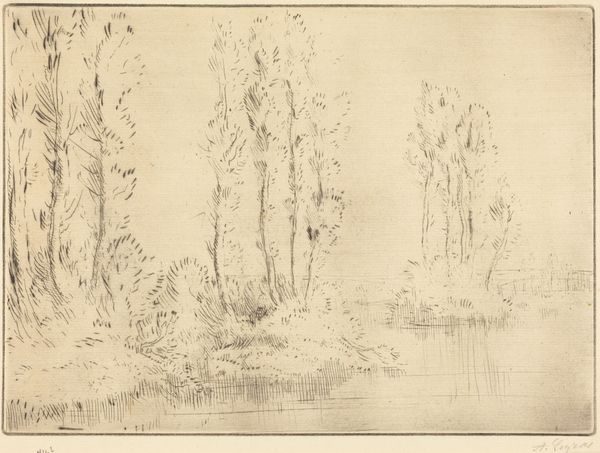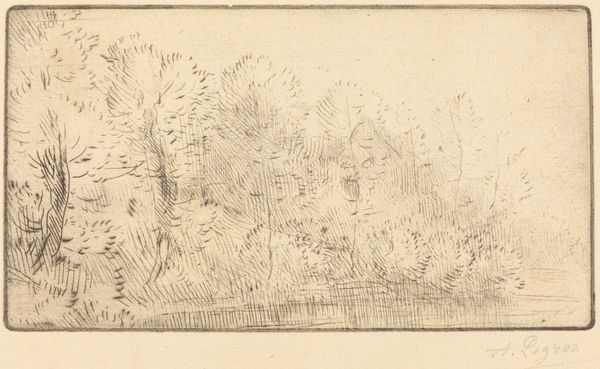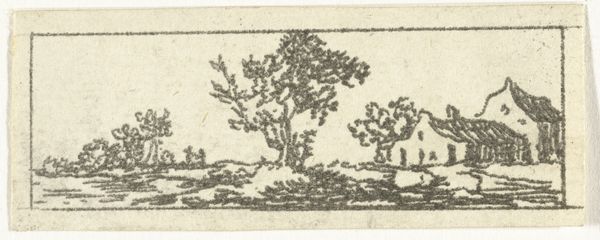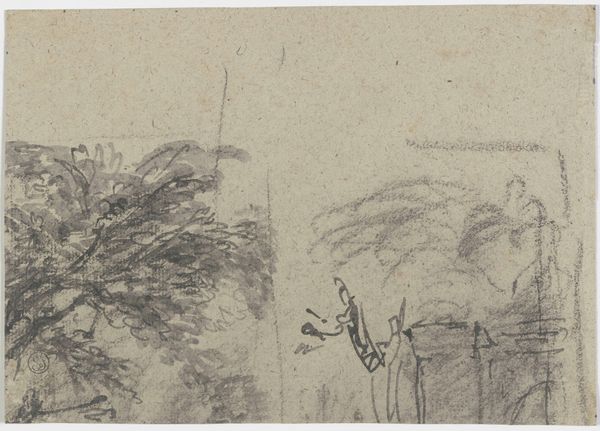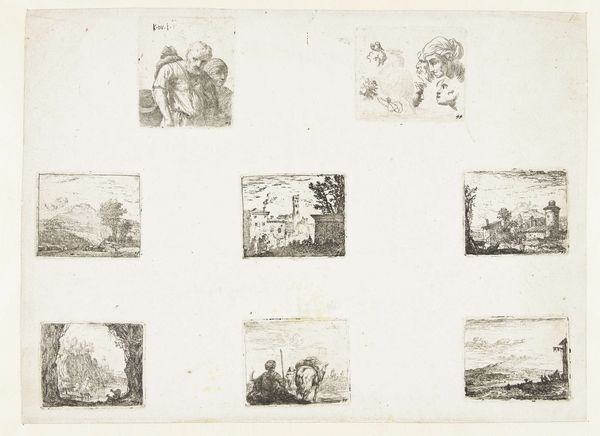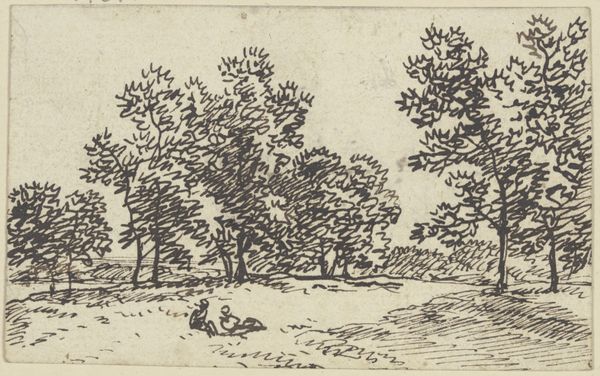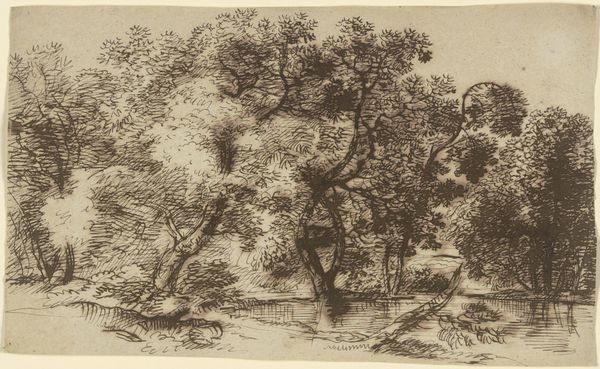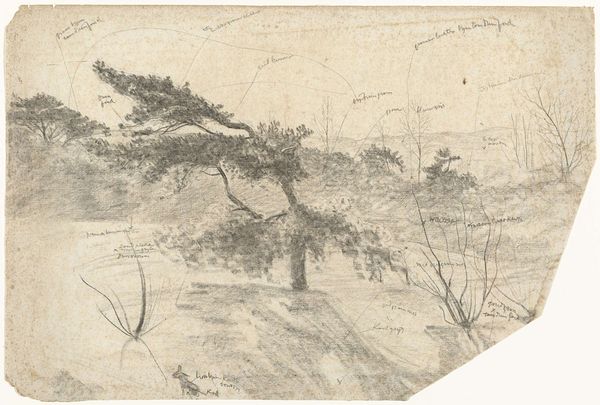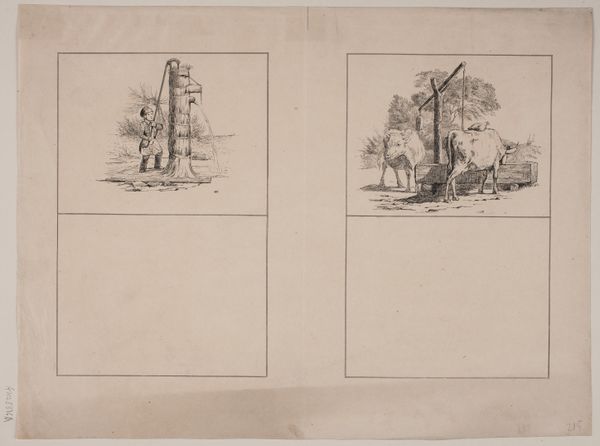
drawing, print
#
tree
#
drawing
# print
#
landscape
#
history-painting
Dimensions: sheet: 5 1/8 x 7 7/8 in. (13 x 20 cm)
Copyright: Public Domain
Editor: This is "The Two Landscapes," created between 1625 and 1635 by Claude Lorrain. It’s a print, a drawing—there's something almost casual, like a quick sketch in its composition. What do you see in this piece, looking at it through the lens of iconography? Curator: What strikes me immediately is the use of trees – notice how each one dominates its individual frame. They’re almost portraits, aren’t they? But beyond the surface, trees are profound symbols. What comes to mind for you? Editor: Well, immediately, ideas of nature, growth…maybe resilience? The way the branches reach? Curator: Exactly. And classically, the tree has symbolized the connection between heaven and earth, a vertical axis representing spiritual ascension. But look at these two in particular. One is sturdy, almost stoic, while the other seems to bend more freely. Doesn’t that bending also suggests humility and adaptation? Editor: That's fascinating! So, the images aren't just decorative landscapes. They are actually communicating…qualities? Emotions? Curator: Indeed. And landscape, from the early modern era on, increasingly served as a projection of inner states. Also, consider where this work sits in art history, its position. The period looked back towards idealized Arcadian landscapes evoking tranquility and a return to simplicity. What emotions might the artist evoke through contrast with civilization? Editor: I never would have considered all that, just from looking at a few trees! It’s like reading a visual poem. Curator: Precisely. These "Two Landscapes" invite us to contemplate nature’s emotional vocabulary, using it to articulate not only outer scenery but inner realities as well. I feel like my view has broadened by understanding it more symbolically.
Comments
No comments
Be the first to comment and join the conversation on the ultimate creative platform.

